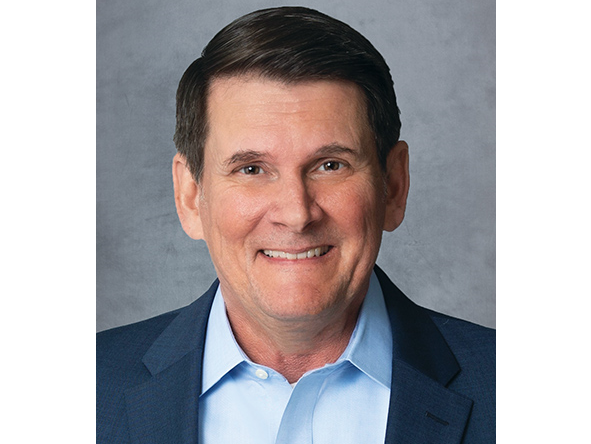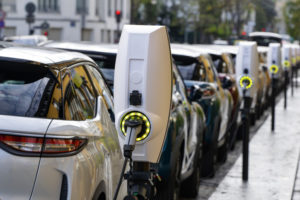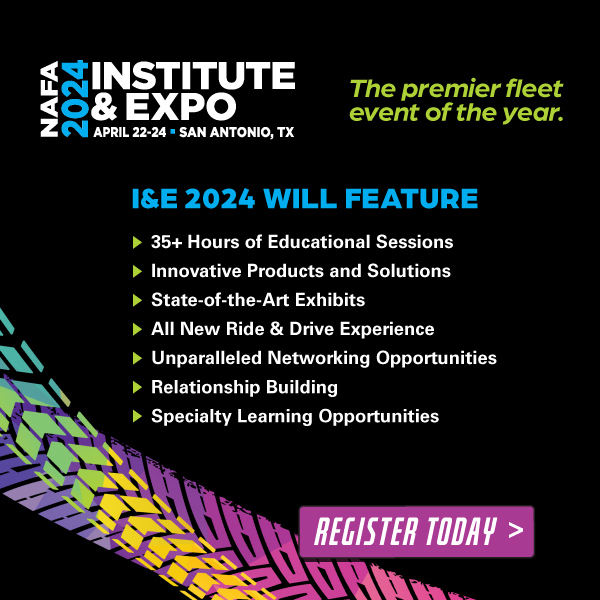
By Ed Pierce, Fleet Management Weekly Contributing Editor
August 22, 2022
Mercury Associates is widely known in the fleet industry as the largest fleet management consulting firm in North America. Their consulting services help organizations better manage their fleets to boost performance and control costs. With the recent push towards fleet electrification and sustainability, they have been instrumental in guiding fleets as they navigate the integration of electric vehicles in an increasingly changing industry.
Paul Lauria founded and directed Mercury Associates for 20 years, serving as its President until his recent retirement. In his current role as Senior Advisor, he continues to consult for individual Mercury clients. We sat down with him to hear his take on the current and future state of the fleet industry and how electrification fits in with other challenges facing fleet owners.
A Changing Industry
With advances in automotive technology and an increasing push toward sustainability, it’s clear that the fleet industry today is very different than it was just a few years ago. But according to Lauria, these changes are only just beginning.
“I believe that fleet management is going to change more in the next decade than it’s changed in the last century,” says Lauria.
He attributes these changes to three major phenomena. The first is continuing advances in automotive technology such as Advanced Driver Assistance Programs, which are making their way into an increasing number of both commercial and personal vehicles. The second is advances in information technology, which began in the mid-nineties but have accelerated greatly since the Great Recession in 2009.
Workforce Changes Require New Thinking
The final phenomenon is a change in workforce demographics and other characteristics that affect the behavior and performance of workforces and their ability to support increasingly complex fleets and fleet management business processes. For instance, many mechanics are reaching retirement age, taking decades’ worth of practical experience and institutional knowledge with them. Without suitable replacements, organizations are often left scrambling to fill critical and growing knowledge gaps.
“To give another example, in much of the world, fleet owners try to run vehicles ‘till the wheels fall off,’” says Lauria. “Well, you could do that for a century or so when vehicles were comprised largely of mechanical parts, but today, as we know, vehicles have many electronic and computerized parts. The US DOT estimated a few years ago that a typical passenger vehicle has computerized components employing about 100 million lines of computer code. So, the vehicles of our fathers and our grandfathers don’t exist anymore, and some of the principles that have governed things like repairing versus replacing vehicles or insourcing versus outsourcing more complex vehicle repairs no longer apply.”
Electrification: A Challenge and Opportunity
Lauria believes that the current global interest in fleet electrification will result in a greater focus on fleet management than ever before, which is a good thing for a support function that often has been overlooked or underappreciated by senior decision-makers. Unfortunately, many fleet managers are unprepared to handle both demands for electrification and the other challenges facing their industry. While the changes in automotive technology, information technology, and the workforce have implications for fleet electrification – and vice versa – focusing too much time and attention on electrification presents the risk that the other critical challenges will be neglected.
“What are we going to do to arrest the erosion of institutional capability as our baby boom generation mechanics all head into retirement?” asks Lauria. “How are we going to deal with that? Are we going to develop an apprenticeship program? Are we going to partner with other fleet owners and try to leverage economies of scale? Are we going to outsource more of the maintenance and repair of our vehicles? Are we going to replace vehicles more frequently so that they spend less time in the shop and we don’t need as skilled a workforce? These are questions that a growing number of fleet owners need to be asking – and answering.”
While it may be difficult for fleet owners to develop a coherent strategy while also juggling electrification, EVs themselves will help address some of these challenges in the long term. For example, electric vehicles should be easier and cheaper to maintain and repair than internal combustion engine (ICE) vehicles over the long term. However, fleet owners will have to deal with the short-term challenge of the higher cost of fleet replacement, which is an area that many fleet owners already struggle in.
Despite the challenges posed by fleet electrification, Lauria believes this trend also poses a great opportunity for fleet owners.
“The opportunity is that electrification forces fleet owners to recognize that they have not been managing the total cost of ownership very well,” says Lauria. “They haven’t been managing their fleet maintenance resources very thoughtfully, and they need to step up their game.”
He believes that adding EVs to the fleet will force fleet owners to acknowledge and address the inadequacy of their spending on vehicle replacement. The challenge will be for organizations to make the necessary changes while juggling competing demands on the time and talents of the fleet management workforce.
Push Toward Sustainability Continues
While companies are always working towards the goal of being more economically efficient, an expanding economy allows organizations to think more strategically. Before the pandemic, many of Lauria’s consulting projects were based on strategically dealing with challenges like brain drain, organizational realignment, insourcing vs outsourcing, and improving replacement programs.
Thanks to intervention by the Federal Reserve and the federal government, the pandemic didn’t dampen the growing appetite for fleet electrification. As we move from the hypothetical to the practical realm of acquiring and using EVs, however, organizations are beginning to ask questions about what happens after they replace ICE vehicles with EVs – questions about vehicle charging infrastructure, for instance. But while the demand is there to electrify, the current limited supply will mean that significant strides in electrification are most likely a few years away.
One major difference that Lauria notes between the US and Europe pertains to the regulation of fleet owners. Because European governments charge higher tolls and taxes on higher polluting vehicles, many fleet owners there have powerful financial incentives to green their fleets. In the US, in contrast, “the tendency has been to regulate vehicle manufacturers – to require them to produce more fuel-efficient vehicles,” says Lauria, leaving it to fleet owners to decide if they will jump on the sustainability improvement bandwagon.
While the current political climate is somewhat favorable to fleet sustainability improvement initiatives, actions like the Biden administration’s executive order to federal agencies to replace conventionally fueled vehicles with EVs wherever possible, and the electric vehicle tax credit, EV charging infrastructure investment, and other provisions of the just-passed Inflation Reduction Act, can only move the needle so much. “There’s a desire on the part of many elected officials to tackle global warming through improvements in fleet sustainability,” says Lauria, “but government mandates and incentives have their limits. Most of the impetus for broad-based fleet electrification will have to come from retail vehicle buyers, vehicle and charging equipment manufacturers, electric utilities, and fleet owners.”






